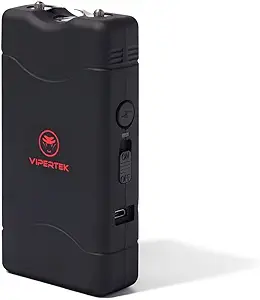The Ultimate Buying Guide for Self Defense Weapons
Overview
When it comes to personal safety, having a self defense weapon can be a crucial tool. There are many types of self defense weapons available on the market, and choosing the right one can be overwhelming. This guide is designed to help you understand the different types of self defense weapons, key considerations to keep in mind when purchasing one, features to look for, and prices you can expect to pay. Additionally, we have included some tips to help you make the most of your self defense weapon and answer some frequently asked questions.
Types
1. Pepper Spray - This is a non-lethal self defense weapon that is easy to carry and use. It contains a chemical compound that causes temporary blindness, difficulty breathing, and a burning sensation on the skin.
2. Stun Gun - A stun gun is a handheld device that delivers an electric shock to the attacker, causing temporary paralysis and disorientation.
3. Tactical Pen - A tactical pen looks like a regular pen but has a sharp point and can be used as a weapon. It is lightweight and easy to carry.
4. Personal Alarm - A personal alarm is a small device that emits a loud noise when activated. It can be used to attract attention and scare off attackers.
5. Knife - A knife is a lethal self defense weapon that requires training to use effectively. It can be used for both offensive and defensive purposes.
Key Considerations
1. Legalities - Before purchasing a self defense weapon, it is important to research the laws in your state or country. Some weapons may be illegal or require a permit to carry.
2. Effectiveness - Consider how effective the weapon is in protecting yourself. Look for weapons that are easy to use and have a high success rate in stopping an attacker.
3. Portability - Choose a weapon that is easy to carry and conceal. It should be lightweight and compact enough to carry in a purse or pocket.
4. Training - Some weapons, such as knives, require training to use effectively. Consider the time and effort required to learn how to use the weapon properly.
Features
1. Range - Consider the range of the weapon. Pepper spray and personal alarms have a limited range, while stun guns and knives require close proximity.
2. Durability - Look for a weapon that is durable and can withstand repeated use.
3. Safety features - Some weapons, such as stun guns, have safety features to prevent accidental discharge.
4. Battery life - If the weapon requires batteries, consider the battery life and how often they need to be replaced.
Prices
The price of a self defense weapon can vary depending on the type and features. Pepper spray and personal alarms can cost between $10 and $30, while stun guns and tactical pens can range from $30 to $100. Knives can range from $50 to $200 or more.
Tips
1. Practice using the weapon - It is important to practice using the weapon to ensure you are comfortable and confident using it in a real-life situation.
2. Carry the weapon on you - Keep the weapon within reach at all times, whether in a purse or pocket.
3. Stay alert - Be aware of your surroundings and avoid dangerous situations whenever possible.
4. Use as a last resort - Only use the weapon as a last resort when all other options have been exhausted.
FAQs
Q: Can I carry a self defense weapon on a plane?
A: No, self defense weapons are not allowed on airplanes.
Q: Do I need a permit to carry a self defense weapon?
A: The laws vary by state and country, so it is important to research the laws in your area.
Q: Can I use a self defense weapon to protect someone else?
A: Yes, you can use a self defense weapon to protect someone else if they are in danger.
Q: Can I use a self defense weapon if I am not physically strong?
A: Yes, self defense weapons are designed to be used by anyone regardless of physical strength.













